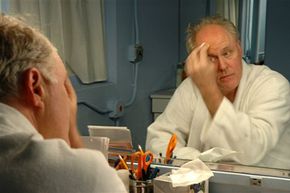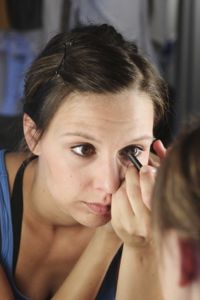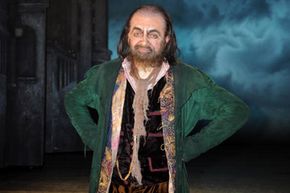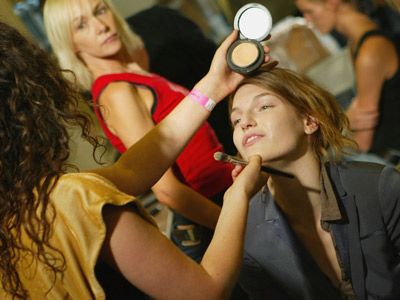Creating a believable character is one of the greatest challenges an actor faces when performing in a show. Actors must consider a host of factors. What does the character sound like? How does he or she move? And of course there's the often-parodied question, "What's my character's motivation?" One thing that can help an actor flesh out a role into a believable character is stage makeup.
Through stage makeup, actors can transform themselves. They can travel through time to play someone younger or add decades of experience with a few simple products and techniques. They can switch genders or become something inhuman. And just as stage makeup can help an audience suspend disbelief as they watch a show it can help an actor lose him or herself in a role.
Advertisement
Stage makeup and cosmetic makeup have two different goals. People use cosmetics to hide imperfections or enhance certain features. But an actor uses stage makeup as part of creating a character. That might mean enhancing imperfections rather than hiding them or employing dramatic application techniques rather than opting for subtlety. Actors can use some cosmetic products for theatrical purposes, but in general performers need to use different techniques and makeup to create the right look for the stage.
Actors won't always employ the same techniques and makeup from one show to another. The way an actor uses stage makeup depends upon the venue itself. An actor performing on a large stage with a house that can seat hundreds of people may need to make his or her makeup more striking than a performer in a smaller theater. For very small venues, actors may only use a simple foundation or powder. Some might not use any makeup at all.
We'll begin with a quick look at the basics every actor needs in a makeup kit.
Advertisement




